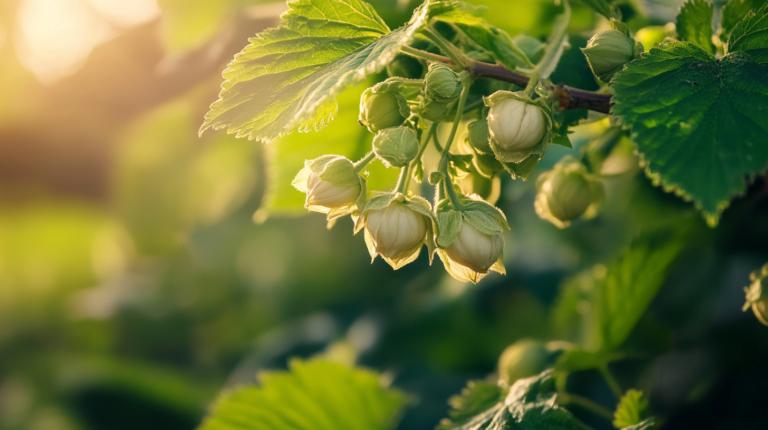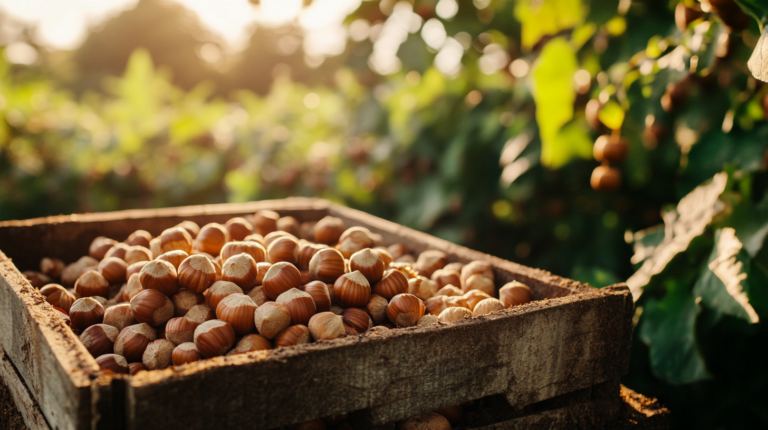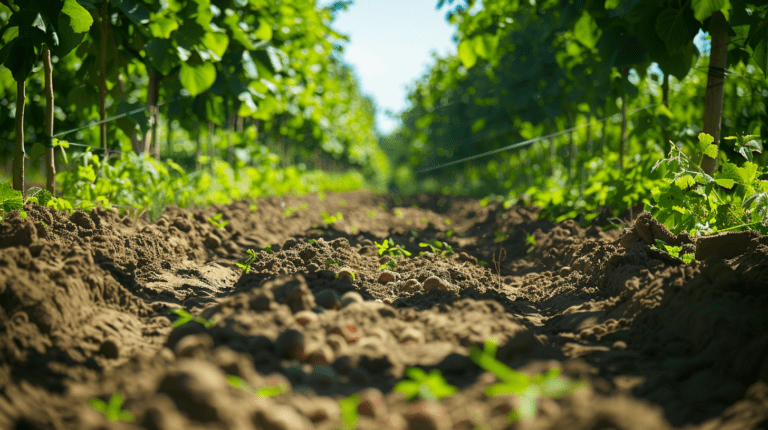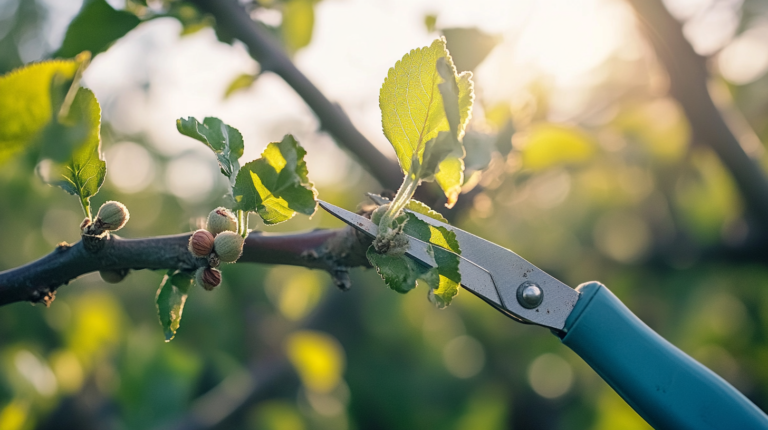Step-by-Step Guide to Planting Hazelnut Trees
Planting hazelnut trees requires careful planning and execution to ensure their successful growth and productivity. This step-by-step guide, based on expert sources, will help you establish hazelnut trees in your garden or orchard, focusing on optimal planting time, site selection, planting methods, and pollination considerations.
Step 1: Choose the Right Planting Time
Hazelnut trees should be planted during their dormancy period, which is typically in late fall or early spring (The Spruce, n.d.). Planting during dormancy allows the trees to establish their root systems before the onset of vigorous growth in the spring.
Step 2: Select a Suitable Planting Site
Sun Exposure
Choose a spot that receives full sun exposure for at least 6-8 hours per day. While hazelnuts can tolerate partial shade, optimal nut production is achieved in full sun conditions (Planet Natural, n.d.; The Spruce, n.d.; Gardener’s Path, n.d.).
Soil Requirements
Ensure the planting site has well-draining, slightly acidic soil with a pH range of 6.3-6.8. Soil rich in organic matter supports healthy growth (Planet Natural, n.d.; The Spruce, n.d.; Gardener’s Path, n.d.). Avoid densely packed clay soils or rocky ground, as these conditions can hinder root development and water drainage (The Spruce, n.d.).
Preparing the Soil
Improving soil structure and fertility is crucial for the successful establishment of hazelnut trees. Incorporate organic matter such as compost or aged manure into the soil to enhance its nutrient content and drainage capabilities (Gardener’s Path, n.d.).
Step 3: Prepare the Planting Hole
Hole Dimensions
Dig a hole wide and deep enough to accommodate the tree’s root system. Typically, the hole should be 15-18 inches deep and 2-3 times the width of the root ball (The Spruce, n.d.).
Planting Bare-Root Trees
For bare-root trees, ensure the hole is deep enough to allow the roots to spread out horizontally without bending. This encourages robust root development and stability (Planet Natural, n.d.).
Soil Amendment
Mix compost or aged manure into the removed soil to improve its structure and nutrient content. This enriched soil will provide the young tree with essential nutrients and support its initial growth (Gardener’s Path, n.d.).
Step 4: Plant the Hazelnut Tree
Removing the Tree from the Container
For container-grown trees, carefully remove the tree from the pot and gently loosen the root ball. This
helps prevent root circling and encourages outward root growth (The Spruce, n.d.).
Positioning the Tree
Place the tree in the prepared hole, ensuring the graft union (if applicable) is 2-3 inches above the soil line. This positioning helps prevent graft failure and supports healthy tree growth (Gardener’s Path, n.d.).
Backfilling and Firming the Soil
Spread out the roots and backfill the hole with the amended soil. Firm the soil gently around the roots to remove air pockets and provide stability to the tree (The Spruce, n.d.).
Water Retention Berm
Build a small soil berm around the planting hole to help retain water. This berm will direct water towards the root zone, ensuring adequate hydration for the young tree (Gardener’s Path, n.d.).
Step 5: Spacing and Support
Tree Spacing
Space hazelnut trees 15-18 feet apart to ensure proper air circulation and growth. Adequate spacing reduces the risk of disease and allows each tree to receive sufficient sunlight and nutrients (The Spruce, n.d.).
Protecting the Tree
Install a mesh tree guard or trunk protector to prevent damage from animals or lawn equipment. These guards protect the young tree from physical damage, which can impede growth and reduce productivity (Planet Natural, n.d.; The Spruce, n.d.).
Staking
Staking is generally not required for hazelnut trees due to their multi-stemmed nature. However, if the tree is in a particularly windy location, temporary staking can provide additional support until the roots are well established (The Spruce, n.d.).
Step 6: Watering and Mulching
Watering
Water the newly planted tree deeply, providing about 10 gallons per inch of trunk diameter each week until established. Consistent watering is crucial during the first growing season to support root development and tree health (The Spruce, n.d.).
Mulching
Apply a 2-4 inch layer of organic mulch, such as wood chips, around the base of the tree, avoiding direct contact with the trunk. Mulching helps retain soil moisture, suppress weeds, and regulate soil temperature (Planet Natural, n.d.; Gardener’s Path, n.d.).
Step 7: Pollination Considerations
Cross-Pollination for European Hazelnuts
For optimal nut production, plant at least two different compatible varieties of European hazelnuts to ensure cross-pollination (The Spruce, n.d.; Haxnicks, n.d.). Cross-pollination enhances genetic diversity and increases the quantity and quality of the nuts produced.
Pollination for American and Beaked Hazelnuts
American and beaked hazelnuts are generally self-fertile but may benefit from cross-pollination. Planting multiple trees can still enhance yields and ensure a more robust harvest (The Spruce, n.d.).
Additional Tips for Successful Hazelnut Cultivation
Pruning and Maintenance
Regular pruning helps maintain tree health and productivity. Remove any dead or diseased branches, and thin out crowded growth to improve air circulation. This practice reduces the risk of fungal infections and promotes better light penetration (Gardener’s Path, n.d.).
Fertilization
Hazelnut trees benefit from annual fertilization to provide essential nutrients. Apply a balanced fertilizer in early spring before new growth begins. Follow soil test recommendations to ensure the correct nutrient balance and avoid over-fertilization (Planet Natural, n.d.).
Pest and Disease Management
Monitor hazelnut trees for common pests such as aphids, caterpillars, and nut weevils. Use integrated pest management (IPM) practices to control pests, including mechanical removal, biological control, and targeted pesticide applications when necessary. Regularly inspect trees for signs of disease and address issues promptly to prevent spread (Planet Natural, n.d.).
Harvesting Hazelnuts
Hazelnuts typically ripen and are ready for harvest in late summer to early fall. Nuts fall to the ground when they are fully mature. Collect fallen nuts daily to prevent spoilage and damage from wildlife. Dry the harvested nuts thoroughly before storage to extend shelf life and preserve quality (The Spruce, n.d.).
Long-Term Care
Hazelnut trees can live and produce for many years with proper care. Continue regular maintenance practices, including watering, mulching, fertilizing, and pruning, to ensure long-term health and productivity. Periodically reassess soil conditions and tree health to make necessary adjustments to care routines (Gardener’s Path, n.d.).
By following these steps and tips, you can successfully establish and maintain hazelnut trees in your garden or orchard. Proper planting techniques, site selection, and ongoing care will help ensure a bountiful hazelnut harvest for years to come.
Conclusion
Planting hazelnut trees involves a series of well-coordinated steps that ensure the trees’ successful establishment and growth. From choosing the right planting time and site to proper planting techniques and pollination considerations, each step plays a critical role in the health and productivity of hazelnut trees. By following the guidelines provided and maintaining diligent care, you can enjoy a thriving hazelnut orchard that produces abundant harvests year after year.
References
Gardener’s Path. (n.d.). How to grow hazelnuts. Retrieved from https://gardenerspath.com/plants/nut-trees/grow-hazelnut/
Haxnicks. (n.d.). Grow at home: Nuts – Whole hazelnuts. Retrieved from https://www.haxnicks.co.uk/blogs/grow-at-home/grow-at-home-nuts-whole-hazelnuts
Planet Natural. (n.d.). Hazelnut tree. Retrieved from https://www.planetnatural.com/hazelnut-tree/
The Spruce. (n.d.). Hazelnut tree growing guide. Retrieved from https://www.thespruce.com/hazelnut-tree-growing-guide-5196351
YouTube. (n.d.). How to plant hazelnut trees. Retrieved from https://www.youtube.com/watch?v=5dfAwYP5EAc






